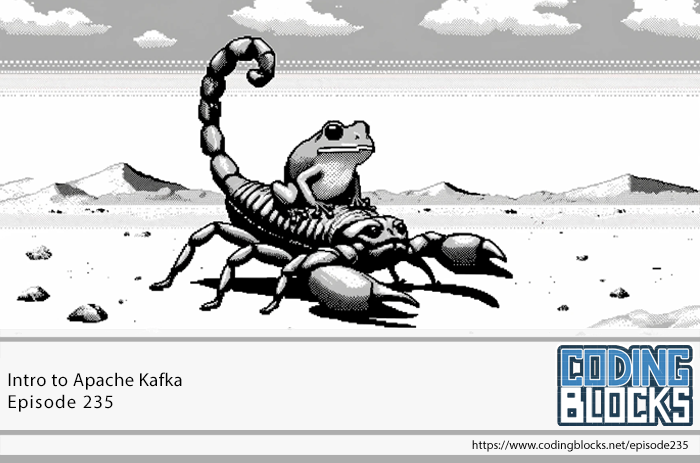
 Coding Blocks
Coding Blocks Intro to Apache Kafka
May 26, 2024
In this podcast, they discuss the intro to Apache Kafka, its core capabilities like high throughput and scalability, and its ecosystem of built-in stream processing. They also touch on unique applications like real-time tracking at Uber, system configurations in Kubernetes, and the roles of producers and consumers in Kafka. The conversation extends to Game Show banter, the Flipper Zero device, Bing's AI tools, and scaling metrics in cloud services and Wi-Fi signal optimization.
Chapters
Transcript
Episode notes
1 2 3 4 5 6 7 8 9 10 11 12
Introduction
00:00 • 3min
Exploring Trust, News Updates, and Event Preparations
02:30 • 2min
Exploring Apache Kafka Features and Capabilities
04:23 • 20min
Exploring the Kafka Protocol and Managing Data in Apache Kafka Clusters
24:33 • 8min
Humorous Discussion on Trust, Marketing, and Game Show Categories
32:59 • 3min
Game Show Banter and Cultural References
35:50 • 17min
Exploring Apache Kafka's Diverse Applications and Streaming Capabilities
52:39 • 4min
Exploring Kubernetes, Apache Kafka, and System Configurations
56:51 • 15min
Understanding Producers and Consumers in Kafka
01:11:56 • 22min
Exploring the Versatile Flipper Zero Device
01:34:21 • 7min
Discussion on Kafka scripts, Game Development IDE, Bing's AI Tools, and Kubernetes Pod Scaling
01:41:36 • 5min
Scaling Metrics in Cloud Services and Wi-Fi Signal Optimization
01:46:40 • 18min

